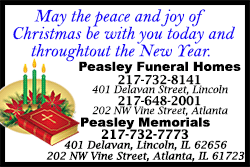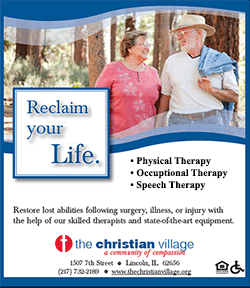|
 Inside, the guns were everywhere: rifles and shotguns piled in the
living room, halls and bedrooms; handguns littering tables and
countertops. Outside, when they rolled up the door on the pre-fab
metal garage, more arms spilled out at their feet. Inside, the guns were everywhere: rifles and shotguns piled in the
living room, halls and bedrooms; handguns littering tables and
countertops. Outside, when they rolled up the door on the pre-fab
metal garage, more arms spilled out at their feet.
“This has completely changed our definition of an ass-load of guns,”
said Chesterfield County Sheriff Jay Brooks. Six weeks after the
discovery, officers are still cataloging the weapons, many of which
have proved stolen, and the final tally is expected to be close to
5,000. “I don’t know if there’s ever been (a seizure) this big
anywhere before,” Brooks says.
The question of how one man amassed such a stockpile of guns arises
just as there is renewed American soul-searching over the widespread
availability of firearms in the wake of a series of mass shootings.

Even in a country where more people own more guns than anywhere else
in the world, Nicholson's cache is extraordinary. The U.S. Bureau of
Alcohol, Tobacco, Firearms and Explosives doesn't rank gun seizures
by size, but a spokesman says Nicholson's hoard probably is among
the largest ever.
Yet when and why Nicholson set out to amass such an arsenal remains
a mystery. Investigators are trying to determine whether he was
simply a gun-obsessed hoarder or a supply valve in the “Iron
Pipeline” of illegal firearms flowing from the south to New Jersey,
New York and other northern states.
Nicholson, jailed on multiple charges of possessing stolen property,
has not entered a plea or retained an attorney, court records show.
His wife, Sharon Nicholson, facing similar charges and free on bond,
declined to discuss specifics of the case but stressed in a brief
interview that her husband buys his guns legally.
The Nicholson case raises issues that are fueling an increasingly
heated national dialogue on the modern-day implications of
Americans’ constitutional right to bear arms, which puts no limits
on the number of weapons citizens can own. The uncertainty over how
he got his guns – and what he was doing with them – underscores
disputes over private gun sales, gun registration and what the
government should know about who owns firearms and how they change
hands.
Now, the spate of mass shootings, capped by Wednesday's spree by a
heavily armed couple who killed 14 at an office holiday party in San
Bernardino, California, has pushed those issues to the fore in the
presidential campaign. The massacre, which follows an attack that
killed three last Friday at a Colorado Planned Parenthood clinic and
an Oct. 1 rampage by a gunman who killed 10 at an Oregon college,
prompted Hillary Clinton, leading candidate for the Democratic
nomination, to renew her call to "stop gun violence now" with new
firearm purchase restrictions. Conversely, those who top the polls
for the Republican nomination, Donald Trump and Ben Carson, insist
the answer to gun violence is to empower citizens to thwart such
attacks by making it easier, not harder, to buy and carry weapons.
It wasn’t hard for Nicholson.
 A FAMILY TRADITION
Just about everyone knows the Nicholsons in this struggling town of
2,700, where the textile industry’s regional decline has helped
strand median household income at $26,500 a year, half the U.S.
average, and burglary rates run well over national norms. Firearms
are a cultural staple – hunting clubs and cabins dot the county –
and people say Nicholson’s penchant for guns was a family affair.
“Everybody knew he’d buy guns; his father bought ‘em, his
grandfather bought ‘em,” says Al Padgett, 68, who keeps a booth at a
local flea market and says he’s known the family all his life. “He
collected ‘em, hoarded ‘em, but I never knew him to sell a gun. Not
one. He did everyone a favor keeping ‘em off the street.”
Brooks sees things differently. Nicholson had piles of allegedly
stolen goods, including a zoo’s worth of taxidermy trophies, Brooks
says, but his preference was guns and he provided a ready market for
burglars who grabbed them from cabins and hunting camps. The sheriff
still hasn’t determined precisely how many guns in Nicholson’s cache
were stolen, noting that hundreds have had their serial numbers
removed so they can’t be traced.
“Getting him locked up dries up the outlet for this stolen
merchandise,” Brooks says.
Brooks suspects Nicholson may have been selling some of the guns. He
had relatively few handguns – maybe a half-dozen large buckets full
– and “that makes us believe he had a market for those and was
moving them north,” Brooks says, noting that the matter remains
under investigation.
South Carolina is a common starting point for firearms moving up the
Iron Pipeline, a route for many of the 230,000 or so guns stolen
nationwide each year. The South has more gun thefts than any other
region, federal data show, and police in New York and other northern
cities say they regularly tie those guns to crimes, though there is
no data on how often.
Stemming the flow is a challenge, law enforcement officials say,
because it’s not organized groups moving truckloads of weapons; it’s
a loose web of individuals who sell guns more as an occasional
sideline than a full-time endeavor.

[to top of second column] |

A SHADOWY PATH
On Oct. 21, a sheriff’s deputy just over the state line in Union
County, North Carolina, pulled Nicholson over for running a stop
sign. Nicholson’s pick-up had bogus license plates – and the deputy
noticed rifle barrels poking up from behind the seat when he
approached the vehicle.
A search turned up 20 rifles, nine handguns and nearly 200
hydrocodone pills, arrest records show, and several of the guns were
stolen. Nicholson was arrested for possessing stolen weapons,
trafficking in opiates and vehicular violations.
Nicholson was still jailed 48 hours later when a deputy in Pageland
stopped by his house with a subpoena in a family court matter. The
deputy spotted equipment in the yard that had been reported stolen,
and investigators returned with a search warrant. They’d spend the
next six days removing guns, hundreds of cases of ammo, and other
goods.
“He was going up to Union County to do something with those guns; we
don’t know what,” Brooks says. “We’ve got information that he was
moving some of these goods and … we’re looking at his activities to
see if he was part of something more organized.”
Tracking Nicholson’s guns is a challenge because many states,
including South Carolina, don’t regulate private gun purchases,
which are unrestricted and require no background check. So
person-to-person sales, including gun show transactions that don’t
involve licensed dealers, are largely untraceable.

There also is no national gun registration mandate – only some state
laws. So, unlike, say, cars, which can be tracked through
registrations, guns often have no traceable ownership trail beyond
their last sale by a licensed dealer.
It's an issue that also is complicating efforts to trace the origin
of the two assault-style rifles and two handguns used in Wednesday's
shooting spree in San Bernardino. The guns initially were bought
legally: two by someone "associated with" the case and two by
someone with no apparent link, according to ATF spokeswoman Meredith
Davis. But it's still not clear how those guns got to the shooters.
President Barack Obama and the major Democratic presidential
candidates support background checks for private firearms sales;
Leading Republican candidates generally oppose additional gun
controls, echoing the National Rifle Association’s position that
they’re unnecessary constraints on gun owners’ 2nd Amendment right
to bear arms.
None of the proposals being floated on either side of the political
spectrum would limit the number of guns someone can own.
A HUNT FOR OWNERS
So far, investigators have identified owners of just a fraction of
Nicholson’s guns. Even those that still have serial numbers can be
traced only to the last time they passed through a licensed dealer.
And since there’s no requirement that gun owners record those
numbers, many who believe their guns were stolen and sold to
Nicholson are unable to prove the weapons belong to them.
Sharon Nicholson, 52, said in a brief interview at the family’s
liquor store that her husband typically bought his guns at stores,
but Brooks says investigators have found no records of any purchases
he may have made from licensed dealers.

Ultimately, the courts will decide what happens to Nicholson’s guns.
Brooks suspects many will be destroyed, particularly those with no
serial numbers, because their rightful owners can’t be identified.
Some locals scratch their heads over that possibility, arguing that
it’s a waste of good weaponry. Nicholson may not have known if he
was buying weapons that prove to be stolen, some say, and he should
be allowed to keep any that do not.
“It doesn’t make sense,” says Otis Burch, 85, another local who
knows the Nicholsons. “He’s a good man – he wasn’t selling those
guns.
“I asked him just about a month ago if he’d sell me a deer rifle,”
Burch adds, “and he said he didn’t have any.”
(Reporting by Peter Eisler; Editing by Jason Szep and Martin Howell)
[© 2015 Thomson Reuters. All rights
reserved.]
Copyright 2015 Reuters. All rights reserved. This material may not be published,
broadcast, rewritten or redistributed. |